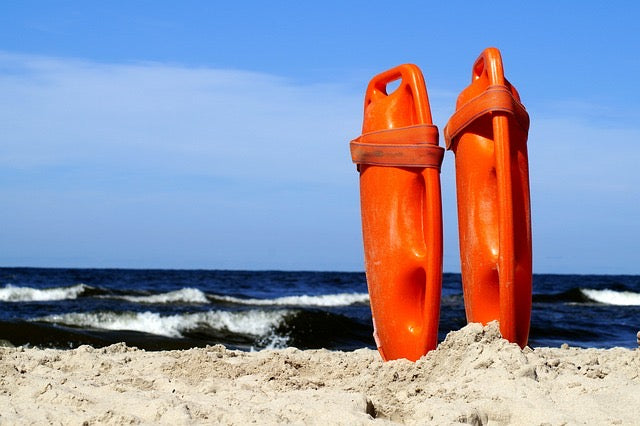Swift Aid in the Waters: Mastering the Lifeguard Rescue Can for Effective Water Rescues

The essential steps and techniques for utilizing a lifeguard rescue can to ensure the safety and well-being of individuals in distress.
Understanding the Lifeguard Rescue Can:
1. Purpose and Design:
• The lifeguard rescue can, also known as a rescue buoy or torpedo buoy, is a buoyant flotation device designed to aid in water rescues. It typically consists of a buoyant canister with handles, allowing easy handling by the lifeguard.
2. Buoyancy and Support:
• The rescue can provides buoyancy and support, enabling lifeguards to swiftly reach and assist distressed swimmers while keeping both rescuer and victim afloat.
3. Swift Deployment:
• Due to its compact size and ease of handling, the rescue can allows lifeguards to quickly respond to emergencies and provide immediate assistance.
Step-by-Step Guide on Using a Lifeguard Rescue Can:
1. Identification of Distress:
• Lifeguards must maintain constant vigilance and swiftly identify signs of distress, such as swimmers struggling, waving for help, or appearing fatigued.
2. Preparation and Accessibility:
• Ensure the rescue can is readily accessible and positioned strategically for immediate use during patrols or monitoring activities.
3. Approaching the Victim:
• Move swiftly towards the distressed swimmer while maintaining a calm and reassuring demeanor, keeping the rescue can within reach.
4. Rescue Approach:
• Extend the rescue can towards the victim, allowing them to grab hold of it while maintaining a safe distance to avoid being pulled under.
5. Assisting the Victim:
• Once the victim grasps the rescue can, instruct them to hold on while the lifeguard gently guides and assists them back to safety.
6. Swift Return to Shore:
• Use the rescue can to support and guide the victim back to the shore or a safe area while providing reassurance and instructions.
7. Post-Rescue Protocol:
• Upon reaching safety, assess the victim’s condition, provide any necessary first aid or medical attention, and ensure they are attended to by trained personnel if needed.
Additional Tips:
• Training and Practice: Lifeguards must undergo regular training and practice sessions to maintain proficiency in using the rescue can effectively.
• Team Coordination: Communication and teamwork among lifeguards are vital during rescue operations, ensuring a swift and coordinated response.
Conclusion:
The lifeguard rescue can is a vital tool in a lifeguard’s arsenal, enabling swift and efficient water rescues. By following these steps and employing proper techniques, lifeguards can effectively utilize the rescue can to provide immediate assistance and ensure the safety of distressed swimmers. Through dedication, proficiency, and the use of essential rescue equipment like the rescue can, lifeguards uphold their commitment to preserving lives and ensuring water safety in aquatic environments.
By mastering the art of using the lifeguard rescue can, trained professionals demonstrate their readiness to respond to emergencies swiftly and efficiently, minimizing risks and ensuring the safety of individuals enjoying water activities.
- Posted in Lifeguard Equipment, Lifeguard Rescue Can

